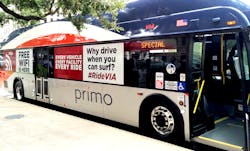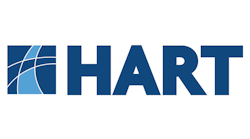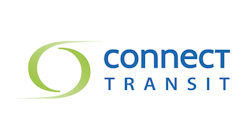Amenities continue to develop, as does agency service reach, it's a matter of deciding which to include. Agencies also have the option to continue to add or develop services as they discover new needs for riders.
On-board comfort
VIA Metropolitan Transit Authority offers Wi-Fi for free throughout their system. VIA originally offered Wi-Fi souly on their express buses and their BRT light route Primo. Jeffery Arndt, president and chief executive officer of VIA was frequently approached by riders when he attended community meetings. They would point out how when they rode the express service they'd have Wi-Fi, as soon as they got off and transferred to their next bus they'd suddenly loose the service.
"They would say 'Wi-Fi today is kind of a necessity and we wish you would look at having it more broadly in your network.’ So we looked at it and we felt that the price was reasonable," said Arndt. "We felt that if we wanted to be attractive to our next generation of riders, they have certain expectations. Certainly as we continue, the next generation coming along it’s going to be important that we are attractive to them. We released Wi-Fi service throughout the fleet. We put it in both the fixed route system and the ADA-paratransit system. We also offer it at a number of fixed facilities, not at every bus stop, but at major transfer points and transit centers."
Since adding the service VIA has received positive feedback. "Obviously we can measure the use of Wi-Fi and our monthly data indicated that over one-hundred thousand passengers each month are using Wi-Fi, so that’s a good healthy number."
VIA also introduced a new service in partnership with the community. VIA's Ride and Read program brings BiblioTech — a service which offers books through digital platforms to riders. It was launched in fall 2016 in partnership with Nelson Wolff's, a county judge's initiative. Arndt was approached at one of the launches of a BiblioTech kiosk where a young man, who was a lifelong VIA rider, asked since VIA had Wi-Fi if they would be able to put the program on-board. The service offers around forty-thousand titles in its library.
"It’s a free service, the Bexar county offers it free and of course our Wi-Fi is free. I actually signed up for BiblioTech the day that we released it," said Arndt. "I found that when I was using BiblioTech I was more diligent in reading, because the book is on your device for like two weeks and then it’s going to roll back into access. I felt pressured to read more, which is a good thing. So huge access of opportunity."
Direct line to customers
In Tampa the Hillsborough Area Regional Transit Authority (HART) deployed the OneBusAway app funded between Florida Department of Transportation (FDOT), the National Center for Transit Research and the Center for Urban Transportation Research at the University of South Florida (CUTR). Most recently OneBusAway underwent a redesign to include new features to increase customer satisfaction. Shannon Haney, ITS coordinator at HART said that since releasing the app to their riders they've received feedback from customers saying that the app is a 'lifesaver'. On January 31 the enhancement to OneBusAway were released, allowing riders to report issues, provide provide suggestions to HART in real time, receive status updates, and monitor the progress and resolutions.
"One of the main reasons for the in enhancements is that we were getting a lot of people making comments and giving us feedback through the OneBusAway app," explained Haney, "but there wasn’t really a user friendly interface for us to get back to them to say ‘yes we have resolved this issue’ or to get more information for our investigation."
Sean J. Barbeau, the principal mobile software architect for R&D at CUTR explained, "Originally we had a tab where you could send feedback it would open an email that would go back to the agency. Email really isn’t a good way to deal with a large amount of feedback." Barbeau said that CUTR worked with FDOT and the National Center for Transit Research to see how to improve the customer service process.
"We wanted to see how we could better channel feedback from users and do it in a friendly way where users could provide information and the agency could very easily triage that and turn it into actionable intelligence," said Barbeau. "We wanted to do this also in a multi-modal way so that different agencies could communicate with each other. We wanted to make sure that we were capturing information from travelers and how they were getting to and from the bus and if there were any problems encountered on the way."
Haney said that HART's customer service department is able to respond almost instantaneously. "Our HART customer service monitors are immediately able to acknowledge riders that are reporting issues. It’s really nice because it lets them know that we are concerned and that we are trying to work with them to provide better service. It's a nice platform to engage the community."
Barbeau explained that the app was customized to cut down on response time. "Inside the app itself the rider is able to choose which particular category when they submit a report, and HART can specify follow-up questions so that when the user clicks send HART already has all of the information they need to take action," said Barbeau.
Improving service
Connect Transit underwent a system redesign — working to increase service to make it more available to riders.
"After many years of minimal route updates and running low frequency network, Connect Transit management knew that it was time to change in order to make the system more appealing and convenient," explained Johnson. "To accomplish this task we contracted with Nelson Nygaard, in 2015, to do a complete Comprehensive Operational Analysis of the existing public transportation system. We wanted to know where we could make improvements, how we could streamline services, as well as what would be attractive to existing and new riders. After 18 months of research, data gathering, and public input, the result was the introduction of a completely redesigned system map with increased frequency and more direct routes. The new routes hit the streets on Monday, August 15, 2016."
In preparation for the launch of the new routes Johnson explained that the agency saw an increased interaction from the community. Connect Transit held more than 100 meetings to get input from the community on what they needed. Since the redesign the agency expects to see a positive response from riders.
"Initial reports from Nelson Nygaard tell us that we should expect to see nearly a 20% increase in ridership within 24 months of the launch," explained Johnson. "Feedback has been mixed as everyone adapts to change in a different way. Many riders and members of the community are thrilled at the increased frequency and how much quicker their rides are due to more direct routes."
Finding funding
Funding can be the "make or break" when it comes to adding amenities and enhancing service.
Johnson said that Connect Transit's latest system updates were designed to be "revenue neutral". Connect Transit's customers have come to rely on the level of service the agency provides. "Connect Transit has done such a great job at improving the public transportation system in Bloomington-Normal, over the past several years that our riders expect both and know that we will work hard to make riding the bus the best experience it can be."
Jonson also added that amenities are something that Connect Transit always have on the docket. "Added amenities has been a big part of Connect Transit’s vision over the past several years and continues to be. On the same day of the routes being launched we also unveiled a new mobile app with improved features," Johnson said. The organization has also been working on making infrastructure improvements at the new stops such as adding shelters, benches, and more detailed route signage."
For VIA they were able to provide Wi-Fi at a affordable price for the agency by doing a procurement. In the end, Arndt said that Verizon was the most attractive option for them. When it came to the BiblioTech, VIA was fortunate to have partnered with the county. "Since it was their program, that was their contribution."
VIA's contribution was the space at their bus stops along with their Wi-Fi service, which is used to power BiblioTech. VIA uses cross-promotion with the service as well.
With HART, OneBusAway is an open-sourced app. Barbeau explained that once developed it also means that it can be deployed in any city. The costs that come back to the agency are downloading the app and adding additional features.
Haney said that when HART has funding issues they may not be able to increase service in typical ways, "but if we can use funding for innovative ideas such as the transit solutions than we’re able to actually increase our customer service and provide better service. We have a hyperlink service where a person can get picked up from their doorstop and dropped at the bus station. So it’s not a traditional way of service. With OneBusAway in Tampa we have close to 33,000 users with tools such as Wi-Fi, OneBusAway, the hyperlink service those are things that enhance service through innovation and not just through more buses on the road."
"I think it’s a good question because you always have a limited budget and you need to determine where to best spend that money for riders," Barbeau said that they did research within the OneBusAway app about how customers perceived service levels. "Even if the agency does not change their service at all, the rider thinks that the service has increased. Having an app that’s available at a bus stop decreases their perceived wait time for when their bus is going to come. If they see their bus is going to be 10 minutes late they can go grab a cup of coffee or wait in air-conditioning before catching their bus."
What riders want
Be it amenities or ridership, attracting riders to take public transit — and keeping them satisfied in service — takes a balance of both. Arndt used his past experience at Houston Metro, where they had an issue with the fleets. Surveys through the media found that riders weren't concerned about buses having air-conditioning, they were more concerned about buses arriving on time, when the buses did begin showing up that became something that riders cared about.
"I think that it is like everything in life, you have to meet some fundamental needs and then the expectation goes up and up. From my perspective you have to have the underlying portions of service and I think that everybody knows that frequency and reliability are the two hallmarks of what makes service attractive," explained Arndt. "You have to have that in place, if you don’t have that in place I don’t think that it matters a huge amount about what other amenities you might put on the service if the underlying service itself is not attractive. What I do believe is that once you build that underlying service, then expectations start going up."
VIA continues to work in making their bus shelters safe and updated, giving riders the choice to have a safe and comfortable place for them to wait. Connect Transit is also focusing first on updating their underlying service.
"Connect Transit has done such a great job at improving the public transportation system in Bloomington-Normal, over the past several years that our riders expect both and know that we will work hard to make riding the bus the best experience it can be," said Johnson.
In the future HART would like to have their streetcar, flex service, bike share and hyperlink solution added to the app. Haney said they would also like to have to option for riders to pay fares as well.





